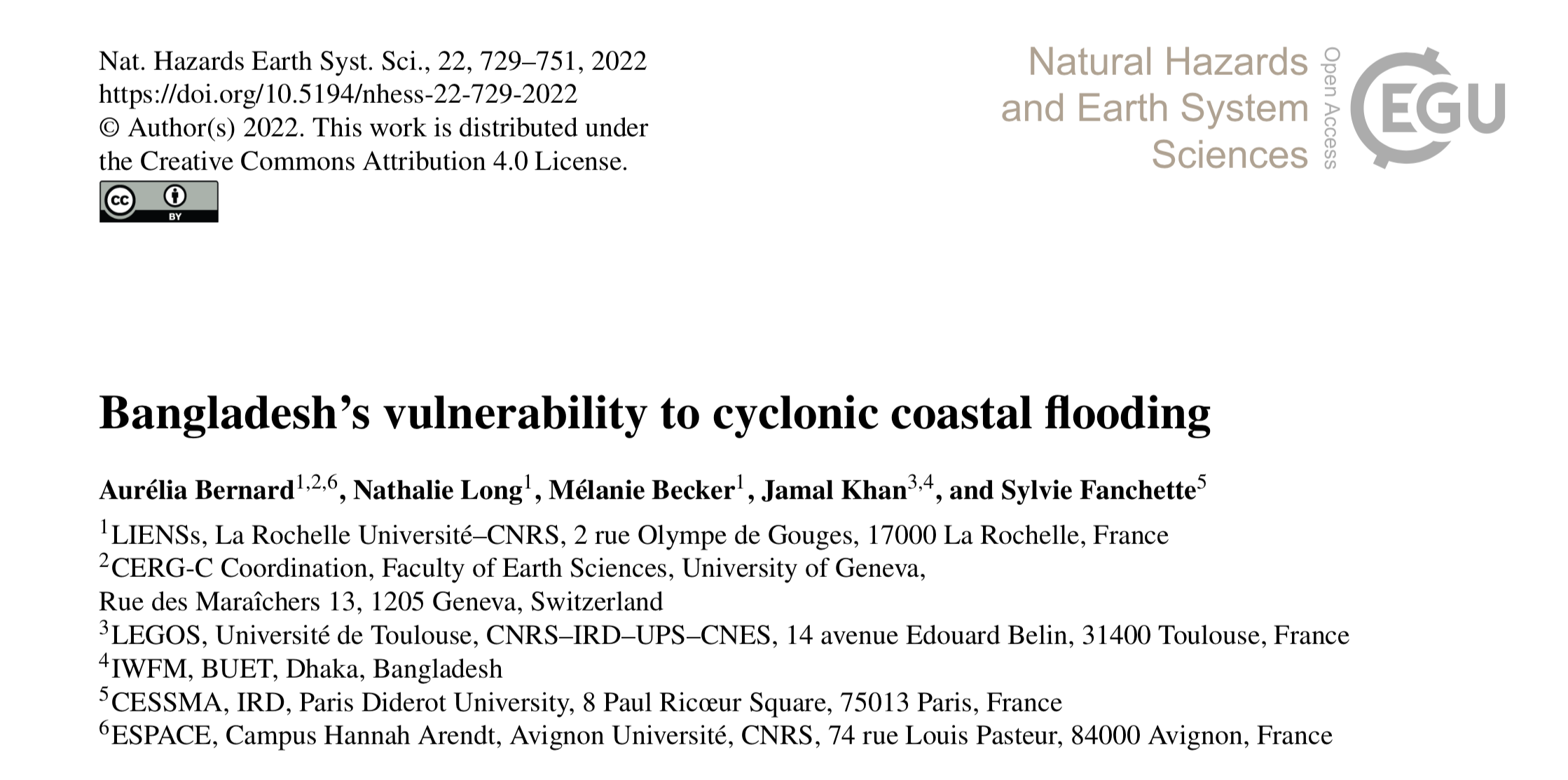 |
[highlight background=”#cee4fb” color=”#000000″ class=””] [/highlight] ABSTRACT
This article reviews the current scientific litera- ture publications (2007–2020) in order to define vulnerability in the context of coastal Bangladesh facing cyclonic flooding. Based on this review, a new metric, called the socio-spatial vulnerability index, is defined as function of both the probability of the cyclonic flood hazard and the sensitivity of delta inhabitants. The main result shows that the districts of Shariatpur, Chandpur and Barisal situated in the tidal flood- plain of the Ganges–Brahmaputra–Meghna delta are in the fourth quartile, i.e., highest category, the most vulnerable ar- eas. These districts are very densely populated (from 870 up to 1400 inhabitants per square kilometer) and exposed to in- undation hazards with a large number of vulnerability fac- tors. Finally, the delta’s mouth was identified as a very vul- nerable area to cyclonic flooding as well. |
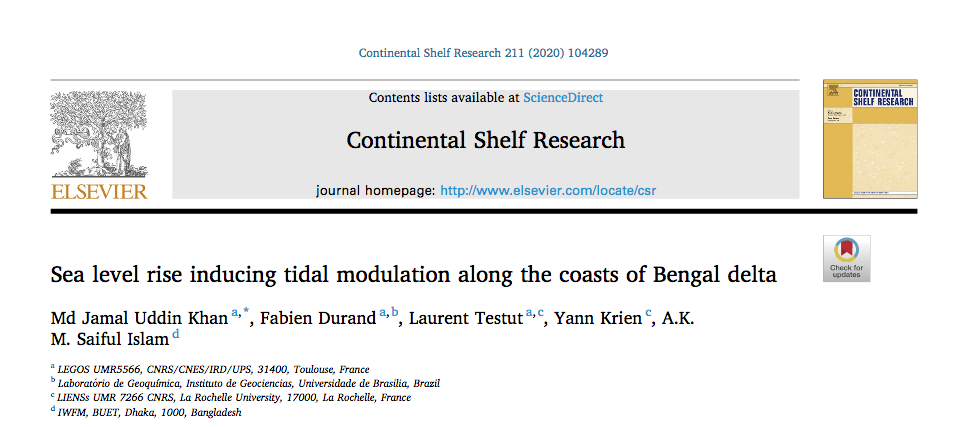 |
[highlight background=”#cee4fb” color=”#000000″ class=””] [/highlight] ABSTRACT
Through a comprehensive modelling framework comprising the coastal delta, major estuaries, as well as the intricate hydraulic network of the delta, we assess the future changes of tidal properties to be expected for various sea level rise scenarios, representative of the end of the 21st century and beyond. It is found that the effect is large, and regionally dependent. Over both the south-western and south-eastern parts of the delta, the amplitude of the tide is expected to increase when the sea level is higher, which is bound to aggravate the tidal flooding hazard. In contrast, the central part of the delta will potentially experience massive flooding of river banks and adjoining lands in the scenarios exceeding 0.5 m of sea level rise. Consequently, this flooding induces a decay of the tidal amplitude in the central part.
|
| [highlight background=”#cee4fb” color=”#000000″ class=””] [/highlight] ABSTRACT
In this work, we analysed 101 monthly records of stream water heights and tide gauges in the Ganges-Brahmaputra delta. By aggregating these data, we show that the water level in the delta has risen by an average of 3 mm/year since 1968, which is similar to or slightly faster than the rise in the average global sea level over the same period. Combining these estimates with sea level measurements, obtained by spatial altimetry over the period 1993-2012, we estimate subsidence rates ranging from 1 to 7 mm/year. If these subsidence rates continue until the end of the century, the relative sea level rise in the Delta by 2100 could reach up to 140 cm, twice the rise previously predicted by the IPCC. |
|
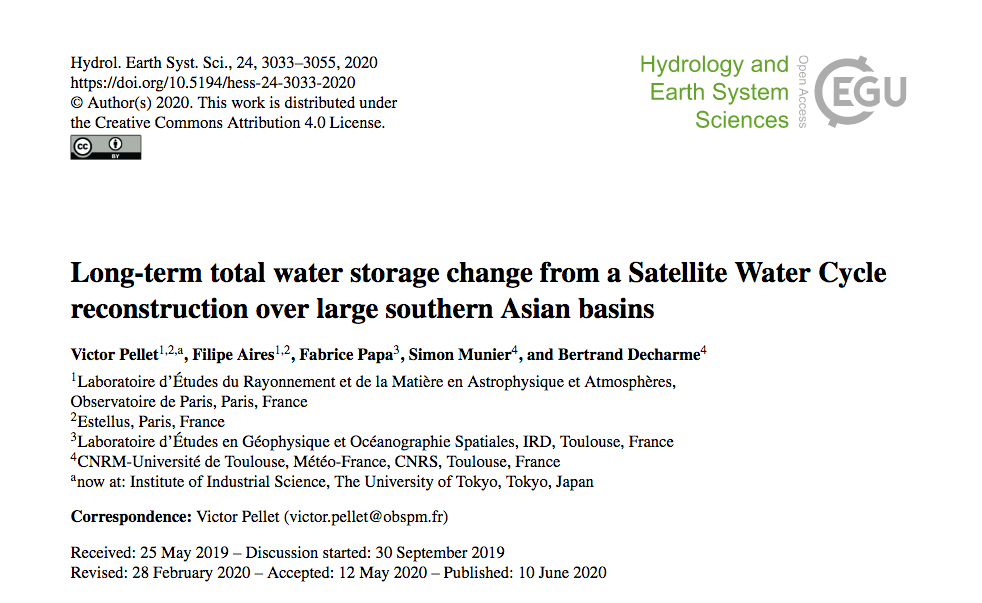 |
The first estimates of large-scale changes in total continental water stock (TWSC) are derived from observations by GRACE (2002-2016) and the GRACE-FO mission (2018-present). In order to estimate the TWSC over longer periods (1980 to 2016), we merge satellite observations of precipitation and evapotranspiration with in situ measurements of river flow in five major basins in Asia, including the Ganges-Brahmaputra and Irrawaddy basins, applying the law of water conservation. The satellite reconstruction of the water cycle (SAWC) provides highly consistent estimates of the TWSC at seasonal and interannual scales, providing new information to better understand its role in the terrestrial water cycle. |
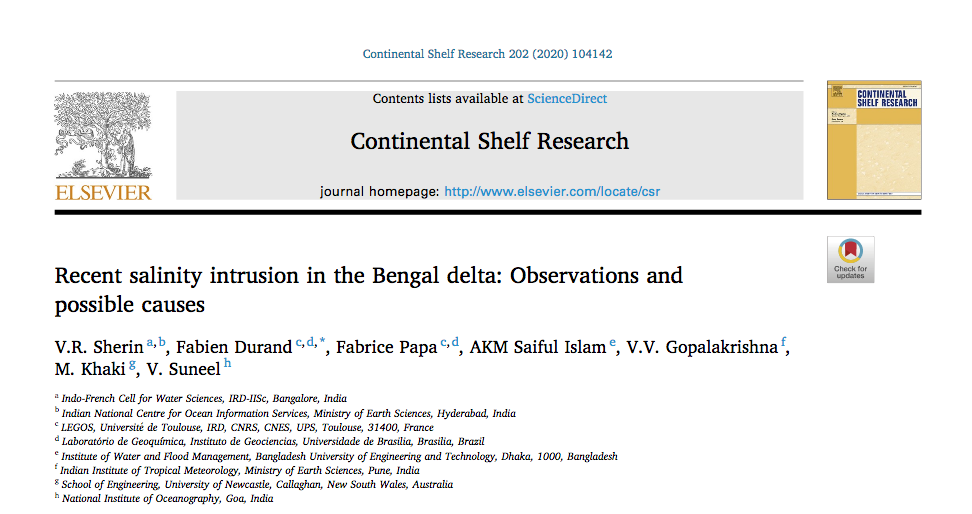 |
[highlight background=”#cee4fb” color=”#000000″ class=””] [/highlight] ABSTRACT
The Bengal delta presents a marked contrast between the fresh river waters coming from upstream and the saline waters coming from the Bay of Bengal. Between these two bodies of water lies a frontal zone, which oscillates between the upstream and downstream parts of the delta over a range of time scales. It responds in particular to the tidal cycle within a single day, to the seasonal cycle of the rivers between monsoon floods and winter low water levels, and to the interannual anomalies that may occur. We analysed the sudden upstream retreat of about twenty kilometres from this frontal zone between 2006 and 2007, and were able to conclude that three factors are potentially responsible for this retreat: the rise in sea level, the drop in the low-water flow of the Ganges, and the drop in the water table level in the delta. [j.csr.2020.104142] [pdf] |
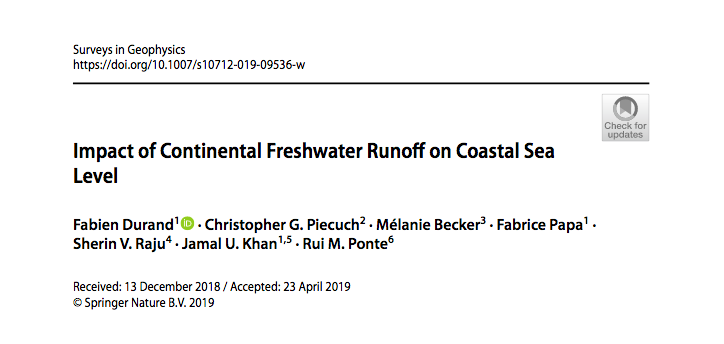 |
[highlight background=”#cee4fb” color=”#000000″ class=””] [/highlight]ABSTRACT
This article presents a review of the impact of river flows on coastal sea level. We begin by making an inventory of existing river flow databases on a global scale. Then we review the state of knowledge on the forcing of coastal sea level by river inputs, distinguishing between the mass effect and the steric effect. The mass effect is related to the global sea level and adjusts the world ocean very rapidly via barotropic ocean waves. The steric effect, on the contrary, has a much longer time scale and a more regional signature. [s10712-019-09536-w] [pdf] |
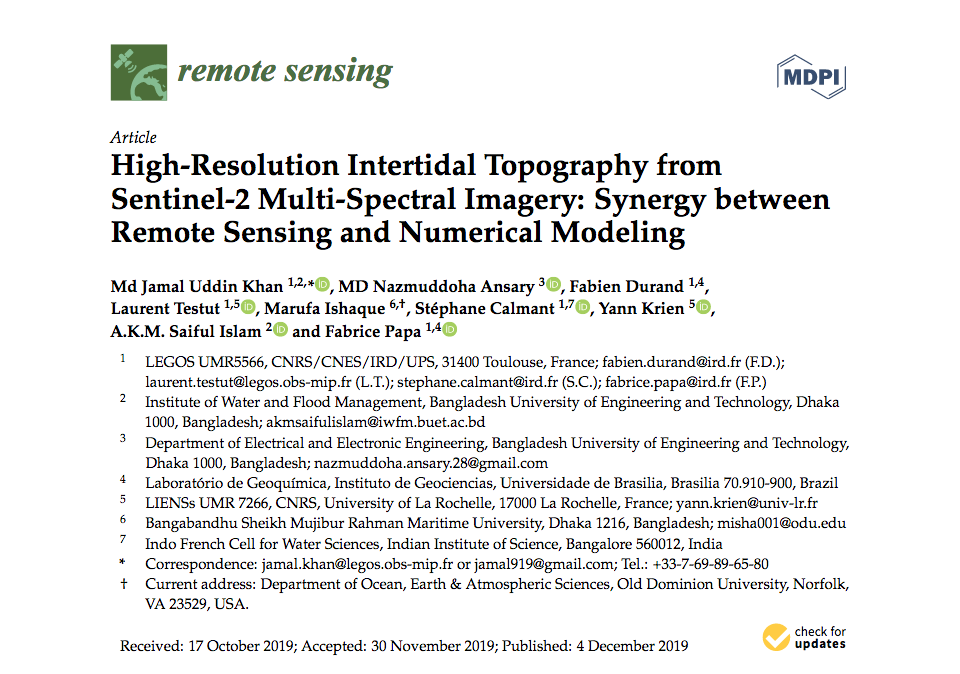 |
[highlight background=”#cee4fb” color=”#000000″ class=””] [/highlight] ABSTRACT The coastal zones alternately covered and uncovered by the tide, known as inter-tidal zones, are a key element in the dynamics of coastal submersion. In very flat coastal regions such as the Bengal Delta, their topography closely conditions the characteristics of cyclonic overhangs and waves generated during extreme events. This study presents a method for estimating this inter-tidal topography, by combining multi-spectral imagery from the Sentinel-2 satellite constellation and the water height predicted by a regional tide model. A high-resolution topography with reasonable accuracy is obtained covering the entire delta, thus increasing our knowledge of this key region of coastal vulnerability. [rs11242888] [pdf] |
 |
[highlight background=”#cee4fb” color=”#000000″ class=””] [/highlight] ABSTRACT In the Ganges-Bramaputra delta, the current subsidence, linked to the Holocene sedimentary overload, is amplified by the presence of structures of tectonic origin. |
 |
[highlight background=”#cee4fb” color=”#000000″ class=””] [/highlight] ABSTRACT One of the major issues in current climate research is the melting potential of the Greenland and Antarctic ice sheets. Indeed, such melting could have major consequences on sea level rise. However, certain stakeholders in coastal adaptation also need to know the minimum values of future sea level rise in order to anticipate the minimum means necessary for adaptation. In this article, we have produced minor sea level rise scenarios. These scenarios are higher than previous estimates, and exceed 0.5m along most inhabited coasts by 2100 and RCP8.5. [w11071507] [pdf] |

